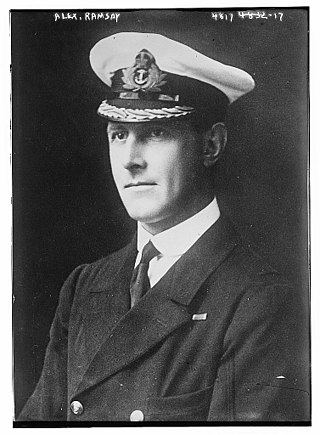
Admiral Sir Alexander Robert Maule Ramsay was a Royal Navy officer. He was the husband of Princess Patricia of Connaught, the youngest child of Prince Arthur, Duke of Connaught and Strathearn, third son of Queen Victoria. He served with distinction during the First World War. During the 1920s and 1930s, he held several important naval aviation commands.

Admiral of the Fleet Sir Roger Roland Charles Backhouse, was a Royal Navy officer. He served in the First World War as a cruiser commander and after the war became a battle squadron commander and later Commander-in-Chief, Home Fleet. Becoming First Sea Lord in November 1938, his major contribution in that role was to abandon the official British policy of sending a major fleet to Singapore to deter Japanese aggression, realising the immediate threat was closer to home and that such a policy was no longer viable. He died from a brain tumour in July 1939 just before the outbreak of the Second World War.

Admiral Sir John David Luce, was a Royal Navy officer. He fought in the Second World War as a submarine commander before taking part in the Dieppe Raid and becoming Chief Staff Officer to the Naval Forces for the Normandy landings. He also commanded a cruiser during the Korean War. He served as First Sea Lord and Chief of the Naval Staff in the mid-1960s and in that role resigned from the Royal Navy along with Navy Minister Christopher Mayhew in March 1966 in protest over the decision by the Labour Secretary of State for Defence, Denis Healey, to cancel the CVA-01 aircraft carrier programme.
John Morley Holford, CB, OBE was a medical officer in the Royal Navy.
Admiral Sir Eric John Arthur Fullerton was a Royal Navy officer.
Surgeon Vice Admiral Ian Lawrence Jenkins was a Royal Navy medical officer and former Surgeon General of the British Armed Forces.
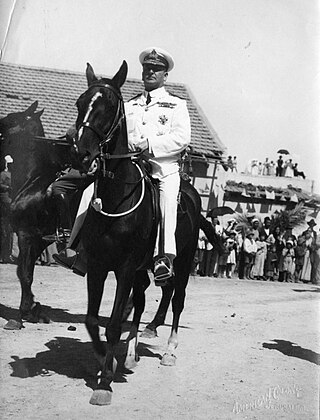
Admiral Sir Richard Webb was a British Royal Navy officer.

The Royal Navy Medical Service is the branch of the Royal Navy responsible for medical care. It works closely with Queen Alexandra's Royal Naval Nursing Service.
Admiral Sir Bertram Sackville Thesiger was a Royal Navy officer who went on to be Commander-in-Chief, East Indies Station.
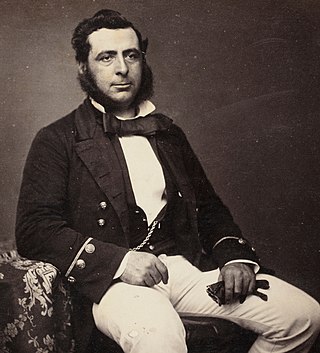
Inspector-General of Hospitals and Fleets Sir John Denis Macdonald was a naval surgeon.
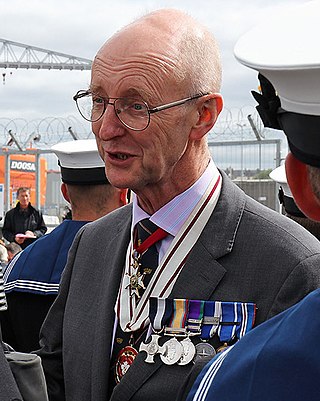
Vice Admiral Sir Richard Jeffrey Ibbotson, is a former Royal Navy officer who served as Deputy Commander-in-Chief Fleet.

Surgeon Rear Admiral Lionel John Jarvis, CBE, KStJ, QHS, FRCR, DL is a British consultant radiologist. He was previously the Surgeon General of the Royal Navy and the Assistant Chief of the Defence Staff for Health. He served as the Royal Navy's Chief Medical Officer and Medical Director General (Naval) until April 2012. He was appointed as an Honorary Surgeon to the Queen (QHS) in 2006. He was both the Prior of England and the Islands of the Most Venerable Order of the Hospital of Saint John of Jerusalem and the Chair of St John Ambulance from 2016 to 2021.

Admiral Sir Philip Andrew Jones, is a retired senior Royal Navy officer. After service in the South Atlantic in 1982 during the Falklands War, he commanded the frigates HMS Beaver and HMS Coventry. He went on to be Flag Officer, Scotland, Northern England and Northern Ireland, Commander United Kingdom Maritime Forces and Assistant Chief of the Naval Staff before being appointed Fleet Commander and Deputy Chief of the Naval Staff. Jones served as First Sea Lord from April 2016 to June 2019.
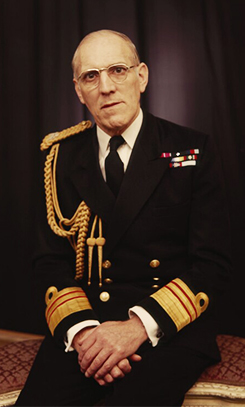
Surgeon Vice-Admiral Sir James Watt was a British surgeon, Medical Director-General of the Royal Navy, 1972–1977 and maritime historian.
Rear Admiral Sir Richard Hugh Loraine Bevan, was a British Royal Navy officer of the First World War and inter-war period.

Surgeon Vice-Admiral Alasdair James Walker, was a British medical doctor and senior Royal Navy officer. He served as Surgeon-General of the British Armed Forces.
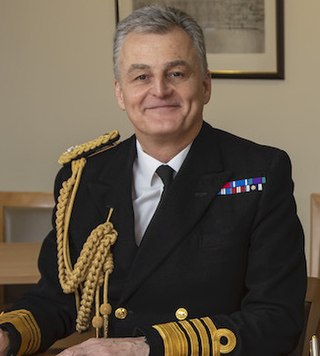
Admiral Sir Timothy Peter Fraser, is a retired senior Royal Navy officer who served as Vice-Chief of the Defence Staff from May 2019 to August 2022.
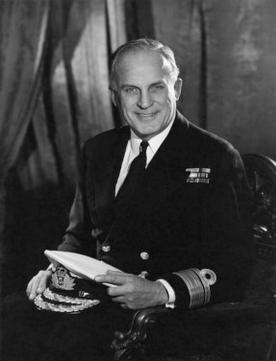
Vice Admiral Sir Hugh Martell, was a Royal Navy officer who served as Admiral Commanding, Reserves. He is best known for his part as commander of Task Force 308 in Operation Mosaic, the series of British nuclear tests in the Monte Bello Islands in Western Australia in 1956.
Surgeon Rear Admiral Arnold Ashworth Pomfret was an English first-class cricketer, ophthalmologist and Royal Navy officer.
Surgeon Vice-Admiral Sir Eric Dick Caldwell, KBE, CB, FRCP, FRCPE was a Royal Navy officer.












